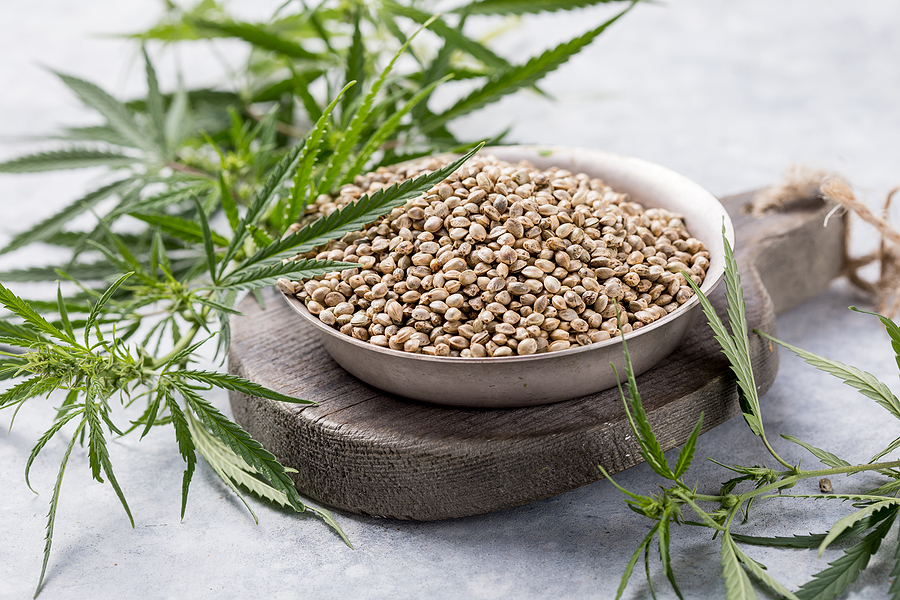Some people may benefit from using CBD to treat conditions such as chronic pain and anxiety, but are put off trying it because they associate it with illegal drugs such as marijuana. However, they are not the same thing. Here’s why.
Cannabaceae family plants
Hemp, cannabis and marijuana are all terms for plants of the Cannabaceae family. However, there are some differences between them, both in the eyes of botanists and the law.
For those making a legal distinction, the question hinges on the tetrahydrocannabinol (THC) content. THC is a chemical found in the cannabis plant, and is what causes the euphoric ‘high’ that is sought by those who use it as a recreational drug.
When is the term hemp used?
Hemp is the term used to describe cannabis that contains 0.3 percent THC or less. The definition was first made by the scientist Ernest Small in 1979, and is still used as a way to legally define hemp. It is fully legal, because the levels of intoxicating THC are so low, that it would be impossible to make a user high.
Hemp is used in many beneficial ways. The seeds of the plant can be eaten or used to make hemp seed oil, and the stalks can be used to make textiles and for biofuel. Hemp contains high levels of non-intoxicating cannabidiol (CBD), which is extracted from the flowers to make complementary medicine and health and beauty products.
Hemp is considered a sustainable crop, because it grows much quicker than trees, and is increasingly used to make paper-based products. It is now commonly used to make clothing, plastics, and animal feed. Hemp seed is high in protein and fibre, and is used to make edible products, such as hemp milk, hemp oil, and protein powder.
So what exactly is marijuana?
The legal definition of marijuana is cannabis that has more than 0.3 percent THC. There’s a whole range of slang terms for it, such as weed, grass, or skunk. Its use as a recreational drug is only legal in a small handful of countries around the world, and some US states. This is because it is an addictive psychoactive drug and may have harmful side effects.
The strength of marijuana depends on the level of THC content; some strains contain much higher levels than others, and are deliberately cultivated for a greater potency. Generally, THC levels are between 0.3 percent and 20 percent, although they can be as high as 33 percent.
The flowers, fruits, and leaves of the plant are dried and used for smoking, although they can also be used for edible products. Some people find that marijuana use has spiritual or medicinal benefits, and there are many that argue that it should be legally allowed for these purposes.
Why do most people just use the term cannabis?
There is a lot of confusion around the terms hemp, cannabis, and marijuana, because they are often used interchangeably. However, as we have seen, there are chemical and legal differences between hemp and marijuana, even though they are part of the same plant family.
Cannabis is a taxonomic term which refers to the flowering plants of the Cannabaceae family, which includes over 170 different plant species. In other words, it’s an umbrella term which covers both hemp and marijuana.
The use of hemp-related products which contain CBD is legal and considered safe in most countries, whereas the use of cannabis with over 0.3 percent THC is considered intoxicating, and its use is highly regulated or illegal in most countries.
There’s also another historical reason why some people avoid the term marijuana. In the US, the drug was associated with Mexican immigrants in the 1910s and 1920s, according to Healthline. There was an influx of new settlers from across the border as people fled the Mexican Revolution, leading to a rise in anti-immigrant feeling.
Until this time, the term marijuana wasn’t in widespread use, although cannabis was legal. However, the US government encouraged the term ‘marijuana’ to be used in a pejorative way against Mexican immigrants, who were stereotyped as drug users. This is why some people consider the term racist, and prefer to use the term cannabis instead.
The negative propaganda is thought to have contributed to the growing and use of cannabis being made illegal in the US during the 1930s. Recently however, growing cannabis with less that 0.3 percent THC (also called hemp) has been made legal in the US and other countries including the UK, subject to licensing.
For CBD and turmeric in the UK, please visit our website today.

